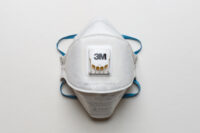No safety technology is changing as fast as that employed in PPE. The devices of just a few years ago are now obsolete by replacements that are lighter, easier to use, and more protective. These resources alert you to developments in the field, and equally important, supply training ideas to get your workers to use their PPE, and use it correctly.
Free Special Report: Does Your PPE Program Meet OSHA’s Requirements?
As we near the end of the year, we’re taking a look back at some of our highlights from 2024. Here are some of the EHS On Tap episodes that stand out from the past 12 months. E197: Maintaining an Effective Safety Culture in a Large Organization On episode 197 of EHS On Tap, Greg […]
The U.S. Department of Labor announced on December 11 that its Occupational Health and Safety Administration (OSHA) finalized a revision to the personal protective equipment (PPE) rule for construction. The rule requires that PPE must properly fit any construction worker who needs it to improve protections from hazardous conditions. You can read the final rule […]
On October 23, the National Institute for Occupational Safety and Health (NIOSH) announced the winners of the third and final phase of its Respirator Fit Evaluation Challenge. NIOSH issued the challenge, seeking practical solutions that provide real-time results on filtering facepiece respirator fit. In Phase 1 of the challenge, entrants submitted concept papers outlining their […]
Back to Basics is a weekly feature that highlights important but possibly overlooked information that any EHS professional should know. This week, we examine OSHA’s respiratory protection requirements. The federal Occupational Safety and Health Administration’s (OSHA) respiratory protection standard (29 Code of Federal Regulations (CFR) §1910.134) is one of its top 10 most-cited standards. In […]
In this installment of EHSDA Shorts, Phillip Jacklin, Continuing Education Program Manager of Diversified Fall Protection, talks about the A, B, C, and D’s of fall protection.
On September 9, California’s Division of Occupational Safety and Health (Cal/OSHA) reminded the state’s employers to protect workers from unhealthy air due to wildfire smoke. The Line Fire is currently affecting air quality in California’s Inland Empire, the areas around San Bernardino and Riverside. Cal/OSHA’s Protection from Wildfire Smoke standard requires employers to protect workers […]
Here’s what you need to know about the elements that must be included in respiratory protection programs, which are required by OSHA for workplaces in which workers must use respirators.
According to a survey by the National Institute for Occupational Safety and Health (NIOSH), healthcare workers who received reusable respirators, such as elastomeric half-mask respirators, during the COVID-19 pandemic gave high marks on the safety climate at their workplaces. The institute highlighted its respiratory research and promotion efforts in its September eNews. The institute is […]
Dust inhalation on construction sites can pose a serious risk for workers, causing damage to the lungs and airways after long-term exposure. Here’s what you need to know about preventing dust exposure.
Back to Basics is a weekly feature that highlights important but possibly overlooked information that any EHS professional should know. This week, we examine how to comply with hearing conservation requirements. Do you have a hearing conservation program in place to protect your employees from workplace noise exposure? Are you taking the necessary steps to prevent […]










